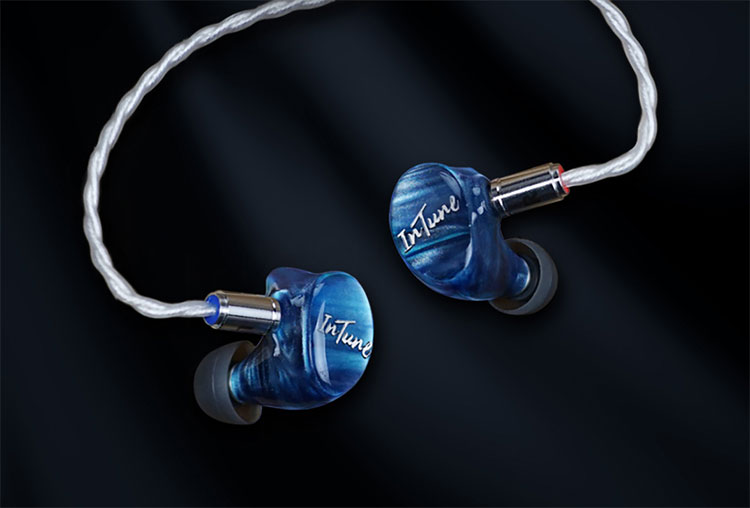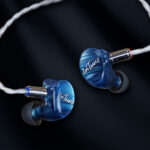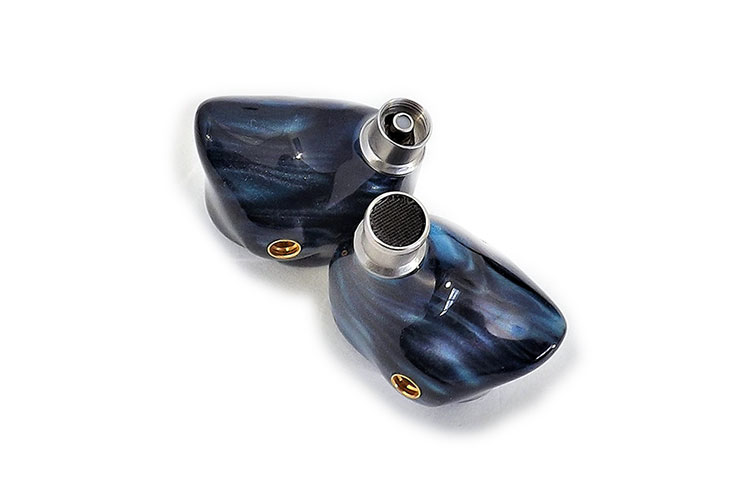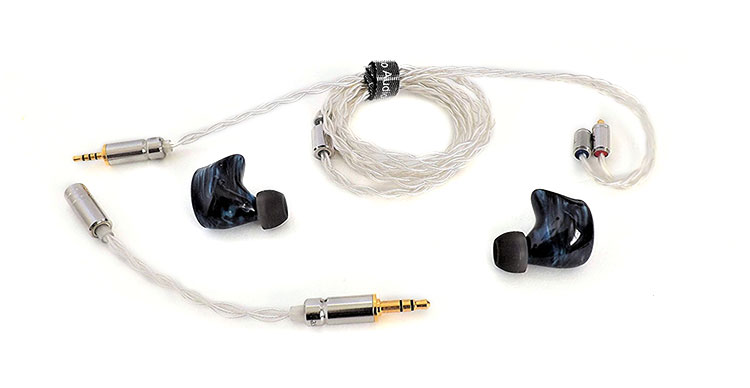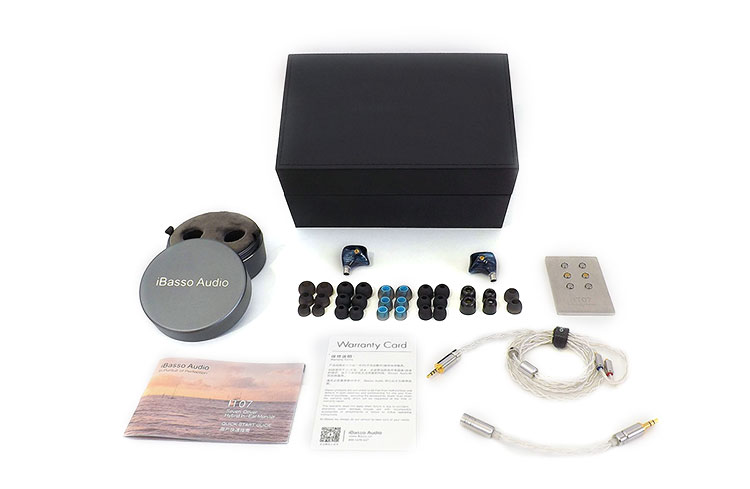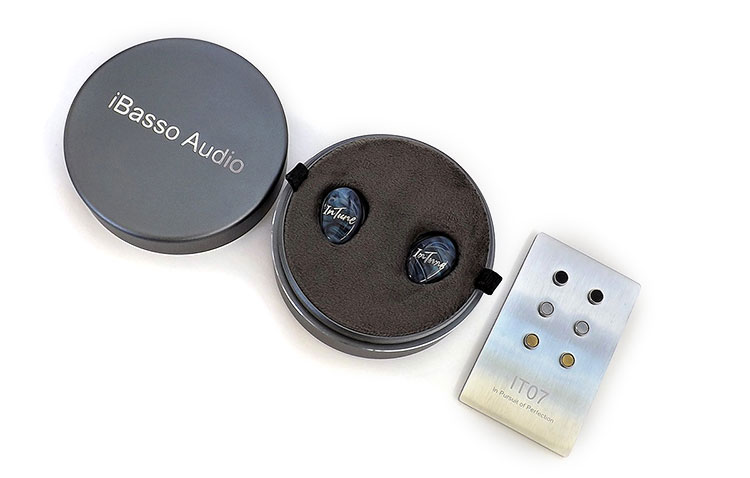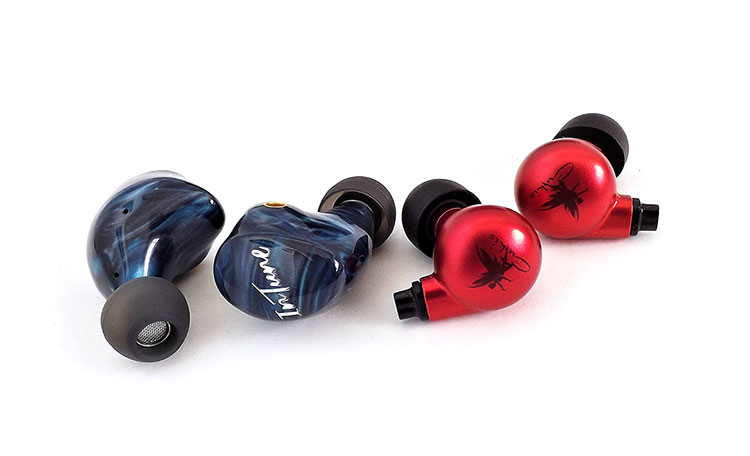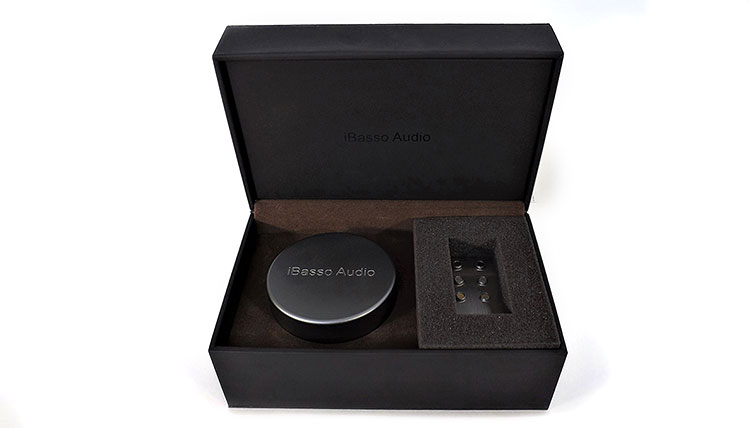The iBasso IT07 is the company’s flagship universal monitor featuring a single dynamic driver and 6 BA driver configuration. It is priced at $899.
Disclaimer: The iBasso IT07 was sent to us as a sample in exchange for our honest opinion in this review. We thank iBasso for this opportunity.
To learn more about iBasso products reviewed on Headfonics you can click here.
Note, this review follows our new scoring guidelines for 2021 which you can read up on here.
iBasso has been working its way up the numbers when it comes to their IT or hybrid driver IEM line starting with their initial offering, the IT03, and recently at the entry-level with the IT00.
Their IT01 was very popular and lots of people liked it. Their IT04, (the next after the IT03), was rather good also but now plays second fiddle to this, their new top-end hybrid, the IT07. The number seven is an indication and a clue of what we have here in front of us.
The iBasso IT07 is a seven-driver IEM that offers four different output nozzle port filters that claim to change the sound tuning offering 3 different sound signatures. Did we hit gold this time? We’re going to take a hard look at the iBasso IT07 and see why this IEM is their top IEM.
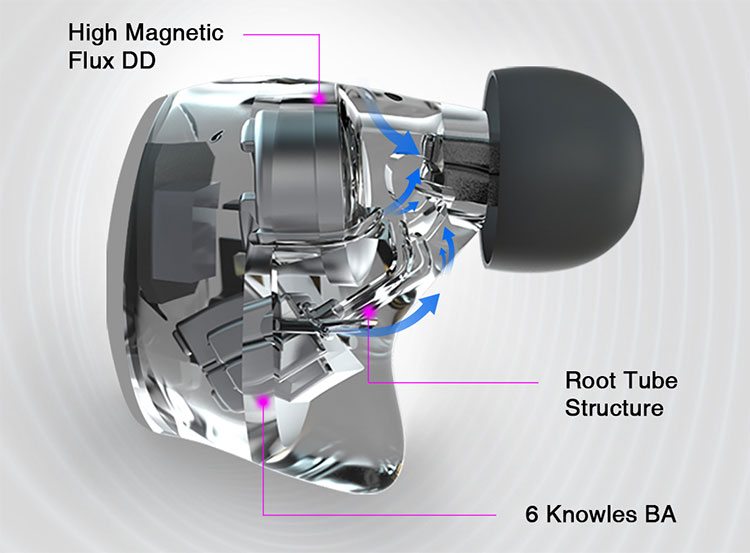
Tech Inside
The iBasso IT07 is more precisely a seven driver hybrid configuration in keeping with its IT series focus. There is one dynamic driver that handles the very low end while another six balanced armature drivers handle the rest of the spectrum.
There is an internal 4-way crossover and the iBasso divides the spectrum on the IT07 as low to mids for the dynamic driver and mid-high and ultra-high frequencies for the balanced armature configuration.
Tesla Driver
The dynamic driver that handles the low-end to mids spectrum on the iBasso IT07 is a tesla high magnetic flux moving coil dynamic driver. Looking at the specifications one can observe that this driver can dig deep, all the way down to 5hz and it reflects in listening tests.
Another thing I noted in listening tests is that I could sense the bass performance weighted to the sub-bass more than the mid or upper-bass because it seems a little isolated from the rest of the spectrum.

Knowles
iBasso likes to use Knowles balanced armature drivers. They use them in most of their IEMS. There is a total of six inside each side of the IT07 and are used in a 2+2+2 connection pattern.
The Knowles 30989 is used for the lower midrange frequencies. Then there is the 31785 which produces upper mids and some high frequencies. Lastly, there are 30017 ultra-high frequency BAs, and as mentioned before there are two of each.
Patented Acoustic structure
The iBasso IT07 uses a patented acoustic tube pattern chamber. This brings each driver output closer to the ear canal while keeping the ability to be able to keep the drivers fairly deep inside the shells.
This is all pretty intense to me because of how much they can fit in an IEM that measures out to about an inch and I bet the cavity size does not reach a cubic inch in size but yet can accommodate 7 drivers in a tube chamber system plus a 4-way crossover.
Design
The iBasso IT07 has a commonly used type of resin body with a seamless and polished finish that resembles a custom body IEM with a tint composed of blue hues and InTune written on the facia in silver.
The output nozzle is made of aluminum and threaded for the removable screens that act as filters to alter the sound signature. There are 4 sets included.
Connectivity is handled by an MMCX connector that seems to be of very good quality with a tight fit that does not allow much spinning in the socket. I dislike when they spin loosely but this one seems to be nice and tight.
Comfort & Isolation
The iBasso IT07 IEMs are not too large or not too small either. Therefore comfort is good and you could wear them for long periods with no discomfort. Or at least for me.
Isolation is average for an IEM. It passively isolates and it does it well. I did notice a very small amount of sound leakage due to the dynamic driver venting port more so compared to BA IEMs which do not have that port.
Driver Venting
There is not much literature available at this time on the iBasso IT07 but just from a visual observation, I see a series of vents and that could only mean one thing. A multi venting system.
This is a new trend with IEMs which is to vent the drivers individually to prevent any back waves from disturbing the other drivers.
Stock Cable
The iBasso IT07 stock cable is genuinely nice I must say with stainless-steel used throughout including the splitter and chin adjuster which have a chrome finish. The MMCX connectors are also made of chromed metal with gold plating on all the contact points and they also have red and blue color coding for easy identification.
iBasso uses a balanced 2.5mm TRRS plug and gives you a matching wired adapter that measures around four inches which converts it to a conventional 3.5mm single-ended TRS.
The wire itself is high-purity silver Litz wire and multistranded with translucent outer insulation. A 4-wire braid goes up to the chin adjuster which then becomes a 2 wire twisted pair up to the MMCX connectors.
Accessories
The iBasso IT07 comes in a black box and inside there is a rather large jewelry case style solid box with spring-loaded hinges. The box is gorgeous and protects the contents. The earbuds come in a heavy-duty hockey puck case made of thick metal lined with either rubber or velvet.
Besides the IEMs and the wire, iBasso throws in 4 sets of output nozzle filters, 15 pairs of different ear tips, 2 of them are foam tips, a brief descriptive owner’s manual, and a warranty card.
Sound Impressions
Summary
The overall sound signature with the stock filter is a very slight and modest U shape with just a fun amount of emphasis in the lower and upper regions. Seems more so in the lower regions.
The sound signature has another trait in that although they do have a U shape sound with the silver filter they sound fairly linear in frequency response. The subtleness of the U makes it so but this changes with the use of the other filters as described below.
Just a small caveat I do recommend burning in the iBasso IT07 for at least 15 hours before you reach the above stock sound signature description. The bass response also improves immeasurably after.
Filters
iBasso has included a stock description for each filter as follows:
- Silver: allows the full frequency spectrum to pass through the filter.
- Black: less treble, more focus on mid and low frequencies.
- Gold: less treble and less mid-range, more focus on low frequencies.
I tried every filter the iBasso IT07 came with and a lot of my listening with the black colored filters inserted. I also used the rubber tips that came installed and did not like foam tips with the IT07 and to me, the nozzles needed to be closest to the ear for best results.
The black filter not only darkened the signature a touch but it quelled some intensity on a subtle peak in the high frequencies. It sounded to me like the culprit was a 7khz to 8khz peak which did show up by a few decibels in the tone sweep test.
I could not find much information about the differences in the filters, not even in the included literature aside from the above description. However, the silver color filters allow a bit more high-frequency resolution to creep in, the gold delivers a good low-end focus and the black filter is for less high frequencies and a darker signature.
The two pairs of silver filters (one out of the box and in the tray) sound the same because they are the same so consider one a back-up in case you lose one. The largest difference I found was with the black filter, however, it still was only a very subtle change overall.
Bass
The iBasso IT07 bass response is very good. On the technical side, when I ran the tone sweep they went down past the 20hz mark with no problems. The bass roll-off starts at around 24hz but it is a gradual dip and the IT07 can go audibly below 20hz.
The bass has a good presence and a good amount of visceral effect and weight. It also has a good amount of omnidirectionality and seems to not have much of a focal point.
Bass tone seems accurate and fast responding. Kick drums seem realistic and accurately produced alongside good note definition. The bass impact is excellent for an IEM.
If you like more bass these take a good boost, unlike some other IEMs which distort quickly the moment you touch that EQ. Even more good news is that a considerable bass increase does not touch the midrange area since the bass driver seems to have a low crossover point and, since it has independent venting, it acts independently from the midrange driver.
Midrange
The lowest point in the frequency spectrum of the iBasso IT07 seems to be around the 1 to 2khz area but in no way does the midrange seem deficient or left behind in any of the frequency areas.
This only keeps the shouty 1khz frequency at bay and this maintains a smooth midrange characteristic. It peaks at around 3khz and this peak just adds some presence. Tonality is maintained accurately and vocals and instruments seem very realistic regardless of this peak.
Which is the one word I would use to describe the midrange? Smooth is the word. All the frequencies are present it is just that their presence is slightly kept at bay so they always remain non-intensive and tame, but a high level of detail is still retained.
The clarity is very good in the midrange allowing the IT07 to produce a natural-sounding vocal and instrumental performance.
Treble
If there is such thing as a 3 quantity sound rating with bass midrange and treble as the 3, then the treble would be in second place in output and presence.
The iBasso IT07 highs sound very accurate and clean with good sharpness, airiness, and a high amount of definition. The only concern here is a peak around the 8khz area which can be intense at times but is somewhat controlled by the black filter.
Treble extension seems very good with a good ability to handle complexity with fast responsiveness.
Layering
iBasso chose their crossover points wisely on the IT07. For instance, the bass crossover is very low and the bass driver seems to act as a separate subwoofer and never affects the other drivers’ performance.
The same can be said with the rest of the drivers. With the right songs, the iBasso IT07 has a very good ability to present each element in the song to sound separated from each other as if a dedicated driver was individually responsible to reproduce each instrument.
Staging
The stage is wide on the iBasso IT07 but they also can close in the space if the recording requires. I would call it a natural amount of staging. I would not call it exaggeratedly large. Height, width, and depth are all there.
Imaging is very precise and the IT07 has the ability to place sound anywhere accurately on a ‘left to right’ plane and even has the ability to produce a small amount of height placement.
Perhaps for some, the staging lacks some height but I find the staging to be very accurate.
Detail
The iBasso IT07 has a fairly good ability to reveal microdetails in recordings. I could pick up on details like string vibration or things like a grunt from one of the musicians.
It is also a fairly revealing IEM that produces lots of hidden nuances in recordings and is very analytical without being too sterile while remaining musical.
Synergy
Efficiency
You can run the iBasso IT07 with your phone because they have a high-efficiency rating of 108db with an impedance of 16 ohms. My Motorola pushed them just fine with volume to spare.
Do they scale well? I would say not because the iBasso IT07 does not need lots of power to be driven well but can also handle some serious power if you choose to go that route.
Scaling
I must have run almost a dozen amplifiers with the iBasso IT07 with not much change, to be honest. Just an example here. Schiit Asgard, iFi Neo, ZEN CAN, iFi Audio Signature series, Zorloo Ztella, and I even ran them with the new Focal Arche.
Within that lineup, which is a lineup that starts at 50mw to a full 5 watts per channel, not much of a change occurs in amplification increase so it is safe to say there is no need for a powerful amplifier.
Selective Comparison
Little Dot CU KIS
Fresh off the review press, this IEM is a fairly unique model with an unusual body style and finish. Go red or go blue is the theme of this comparison.
In construction, these are worlds apart with one being a metal shell construction with a 2 pin .78mm connector and the other made of resin with an MMCX connector. The CU KIS is a smaller IEM.
I like the fact that Little Dot included a setup that gives you 4 different connection possibilities. I think the IT07 could have done better in this area which just includes 2 connection types with a 3.5mm adapter and a 2.5mm balanced connector.
The unboxing experience is way superior on the IT07 with its large jewelry storage box and spring-loaded hinges wrapped in a matte black material with a suede-like interior. Even the hockey puck is heavier which has a rubber lining with a suede cradle for the IEMs.
Tonality
The Little Dot CU KIS has a slightly more dynamic presentation with a forward midrange more so than the IT07 U-shaped sound signature. The IT07 has a more relaxed sound signature.
The bass presentation is very similar and I would consider the Little Dot bass to be equal to the moving coil Tesla driver used in the IT07 with a fast and deep response that can also handle a good amount of boost.
The midrange is a different story. The CU KIS is more forward and actually can present some minuscule amounts of harshness unless tamed unlike the smoother response of the IT07.
Treble response is also very similar, after all, they both use a BA as a super tweeter, and doubt there is much of a difference in the drivers themselves. They both do highs very well.
Staging
The CU KIS most definitely has the taller soundstage but the IT07 does depth better.
It seems like the IT07 stays mainly on the same plane producing a soundstage that remains close to an eye-level contrary to the taller but more up-close presentation of the CU KIS. Sometimes an eye-level soundstage can be more realistic especially listening to concerts and stage music.
Our Verdict
The iBasso IT07 receives no complaints from me because it does so many things very well. The Tesla driver can dig deep into the bass, the vocals sound very smooth and clear and the highs are clean and crisp with an overall balanced frequency response.
They also do layering well with an eye-level soundstage that is realistic and believable.
My only wish was for 4.4mm connectivity but that is easily solved. I don’t think the IT07 needs a balanced connection anyway except if you want to remove crosstalk because they are efficient enough to run on low power which is another plus under their belt.
Do I recommend the iBasso IT07? The answer is yes. They are analytical, yet somewhat musical with a high level of efficiency, and with all the above mentioned, how can I not recommend them?
iBasso IT07 Specifications
- Impedance: 16Ohm.
- Frequency range: 5Hz-40kHz.
- Sensitivity: 108dB/mW.
- THD+N: <1%.
- Noise isolation: -30dB.
- 2.5mm-3.5mm connector included in the package.

